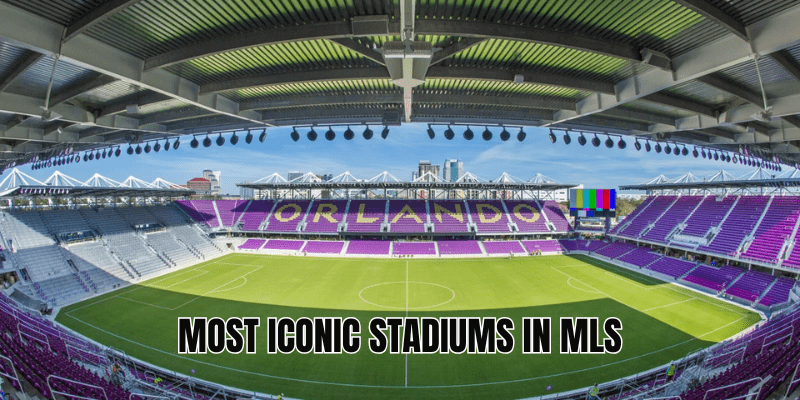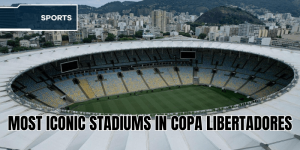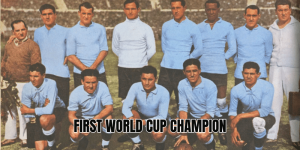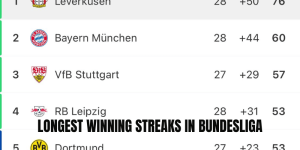In the tapestry of North American soccer, stadiums are more than concrete and steel — they are cauldrons of passion, identity, and history. Whether it’s the deafening roar of fans in the Pacific Northwest or the soaring architecture in Atlanta, the most iconic stadiums in MLS shape the narrative of this league’s rise. In this article, AnnuGoal will take you through the stadiums that matter — the ones that echo with legendary matches, club lore, and fan culture.
What Makes a Stadium “Iconic”?
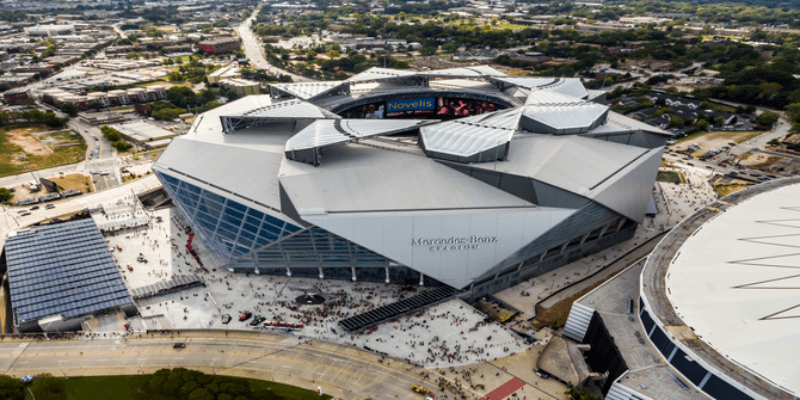
Before we dive into the list, let’s define our yardstick. A truly iconic MLS stadium often combines:
- Historical significance: ground zero for milestones, classic matches, or innovation
- Atmosphere & fan culture: where supporters’ voices become part of the spectacle
- Architectural features: design elements that distinguish it from generic venues
- Versatility & signature moments: hosting big finals, international matches, or breaking records
With that in mind, here are seven stadiums that stand above the rest in the Major League Soccer world.
Mercedes-Benz Stadium (Atlanta United), retractable “pinwheel” roof, Mercedes-Benz Stadium announces itself as a football cathedral. Though it is shared with the NFL’s Falcons, its adaptability for soccer and sheer spectacle give it legendary status.
Opened in 2017, “The Benz” doesn’t shy from big moments — it hosted the 2018 MLS Cup and set an attendance record of 73,019 during that final. Its capacity and design allow for upward of 71,000 seats for soccer when fully expanded.
What seals its iconic status is the marriage of modernity and spectacle: even in shared seating, the pitch-side experience, crowd noise, and visual drama make it feel like a home for soccer nights.
Lumen Field (Seattle Sounders FC)
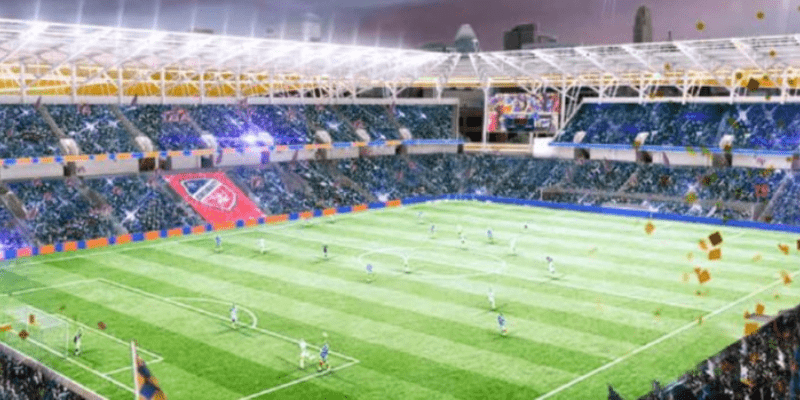
In the rain, in the chill, in midwinter — Lumen Field remains one of the most intimidating homes in MLS. Known previously as Seahawks Stadium / Qwest Field / CenturyLink Field, this venue hosts both NFL and MLS matches. ttps://en.wikipedia.org/wiki/Lumen_Field?utm_source=chatgpt.com))
For soccer, the stadium typically caps around 37,722 seats, but the magic lies in how the crowd feels — it gets compressed, loud, and relentless. Seattle’s supporters twice claimed the Guinness World Record for loudest outdoor stadium roar (136.6 dB and then 137.6 dB).
It is also one of the selected venues for the 2026 FIFA World Cup — proof that even a multipurpose stadium can become an icon in the soccer world.
Historic Crew Stadium / Mapfre Stadium (Columbus Crew)
Sometimes, the most iconic stadiums are modest in size but massive in legacy. Columbus’s original soccer-specific stadium — opened in 1999 — was one of MLS’s earliest purpose-built homes.
It sparked a wave of soccer-first stadium construction across the league. While its capacity is modest (around 19,968 for soccer matches), its role as a pioneer gives it a special place in MLS history — the ground where a suburban soccer movement began.
Gillette Stadium (New England Revolution)
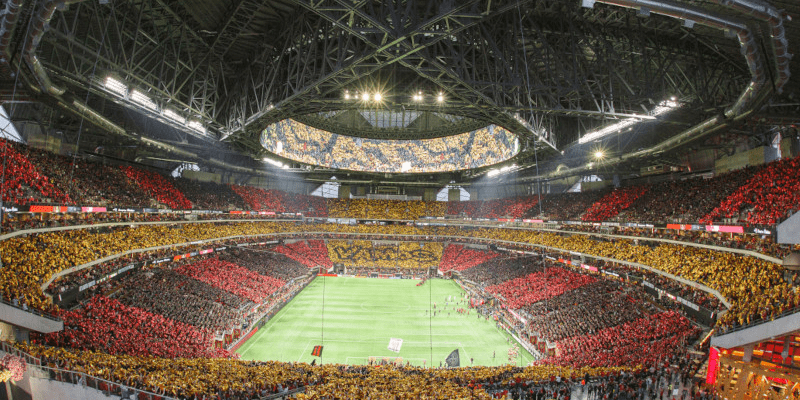
Not all iconic MLS venues are soccer-specific. Gillette Stadium, primarily built for American football, has etched itself into league lore through key moments and massive matches.
Notably, it hosted the 2002 MLS Cup Final (Revs vs Galaxy) with a crowd of 61,316 — then the largest stand-alone postseason crowd in MLS. Decades later, in April 2024, it saw 65,612 spectators for a Revs vs Inter Miami match — another record on its turf.
Its integration into major soccer and international events (CONCACAF, Copa América ties) cements its status as an icon beyond just Revs fans.
Sports Illustrated Stadium (formerly Red Bull Arena)
This relatively intimate 25,000-seat stadium isn’t massive in capacity, but it earns its stripes. It’s home to the New York Red Bulls and has welcomed countless high-stakes matches. Recently, it underwent a name change — from Red Bull Arena to Sports Illustrated Stadium under a 13-year naming-rights deal. pnews.com])
What gives it iconic status is how a compact stadium can be loud, visceral, and unyielding. The proximity of fans to the pitch, the canopy effect, and the consistency of matchday energy make it a benchmark for soccer-first design.
Providence Park (Portland Timbers)
A living relic of American soccer evolution, Providence Park predates MLS by decades. Its tight urban footprint, steep stands, and rich atmosphere make it a classic. In dozens of rankings, it’s often named the top stadium in MLS. ourfourtwo.com])
What stands out is how it blends history with modern upgrades — a stadium where echoes of past generations coexist with today’s chants. It’s a cauldron of fan identity, often referred to by MLS writers as a “cathedral of soccer.” urFourTwo])
Energizer Park (St. Louis City SC)
A newcomer, but already earning icon status, Energizer Park has turned heads with innovative design. Opened in 2023–2024, this sunken-field “sound bowl” brings fans just 120 feet.
Its subterranean layout magnifies crowd noise and visibility. Though it lacks decades of history, the architecture — combined with St. Louis’s fervent support — makes it feel destined for iconic status in MLS lore.
Honorable Mentions
These stadiums nearly cracked our top list, either due to capacity, historical significance, or fan culture:
- Bank of America Stadium (Charlotte FC) — currently ranking among the largest in capacity in MLS.
- BC Place (Vancouver Whitecaps) — with its retractable roof and regional significance.com])
- Allianz Field (Minnesota United) — lauded for its compact, fan-centric design.
- Gillette, Soldier Field, Yankee Stadium — multipurpose venues that have left lasting imprints on MLS trajectories. ])
Conclusion
The most iconic stadiums in MLS are not just venues — they are symbols. Some prove that size and modern engineering can dazzle (like Mercedes-Benz), others show that history, intimacy, and fan devotion carry lasting power (Providence, Historic Crew). Meanwhile, new innovations like Energizer Park hint at what’s next.
As the league continues to grow — with new stadiums being built, renovations underway, and fan landscapes evolving — these stadiums will continue shaping identity, memory, and the soul of MLS.
Now, AnnuGoal invites you: which stadium from this list is your personal icon? Want a stadium guide, matchday experience tips, or a full ranking update? Just say the word — we’ll build it next.
